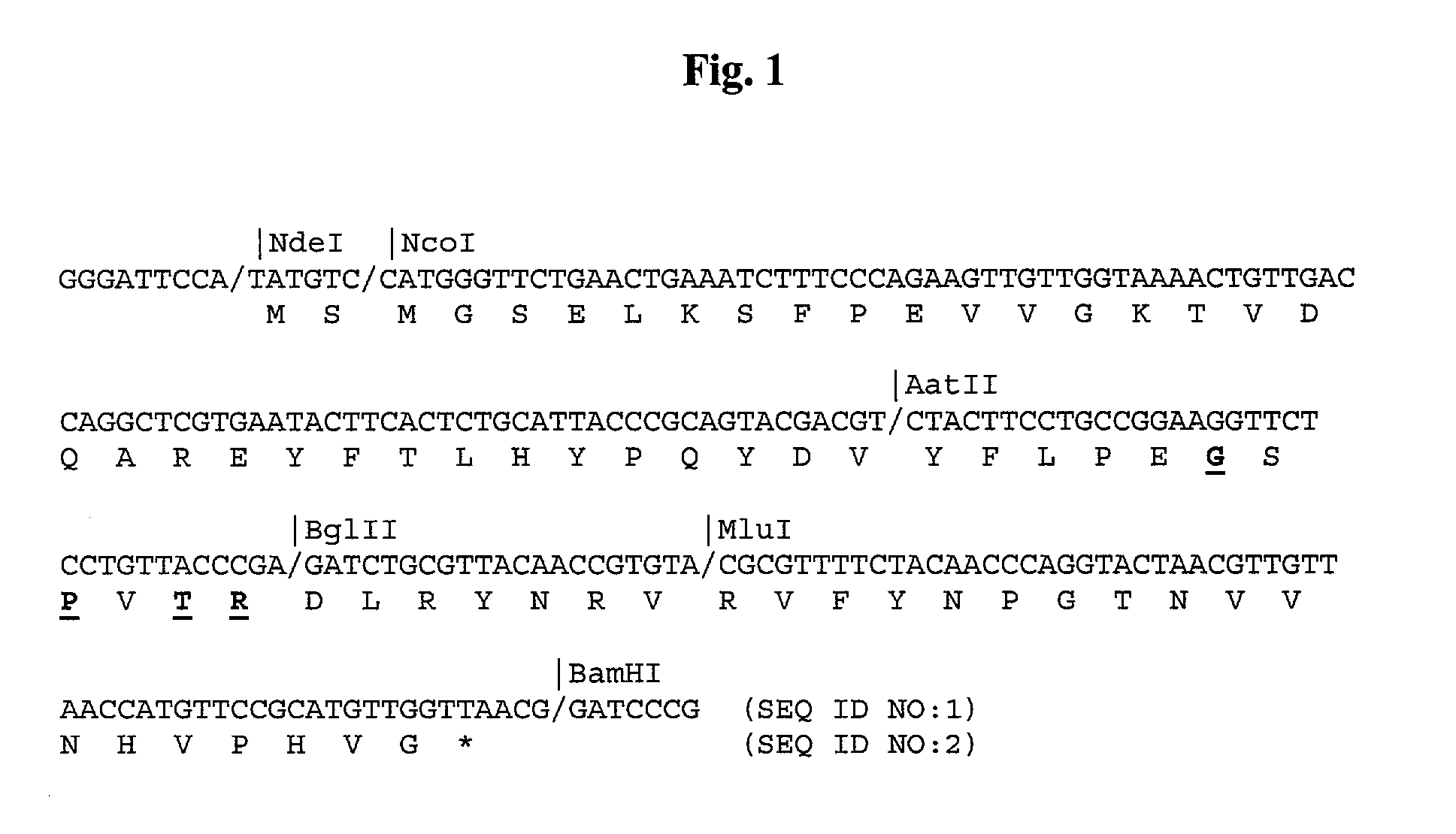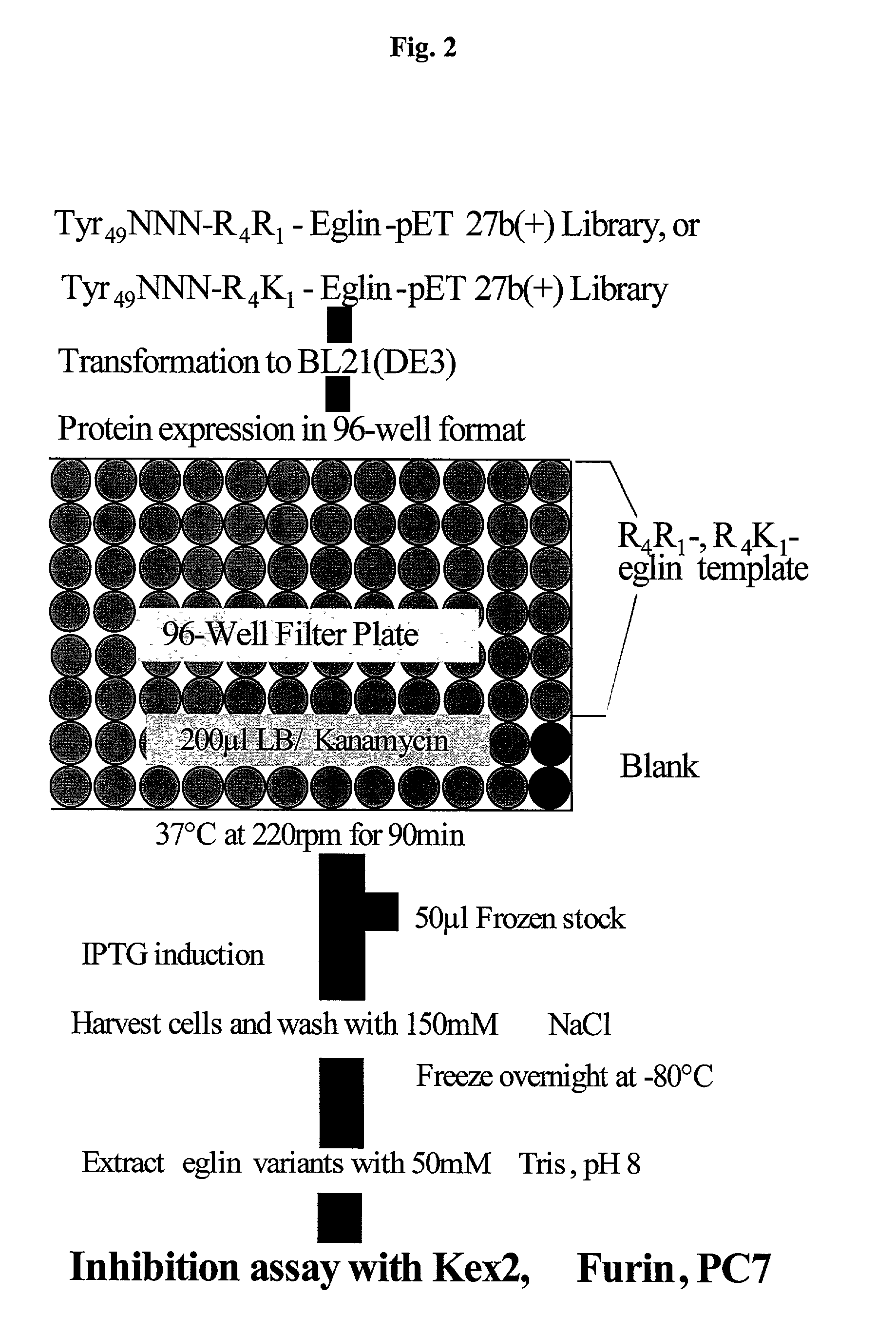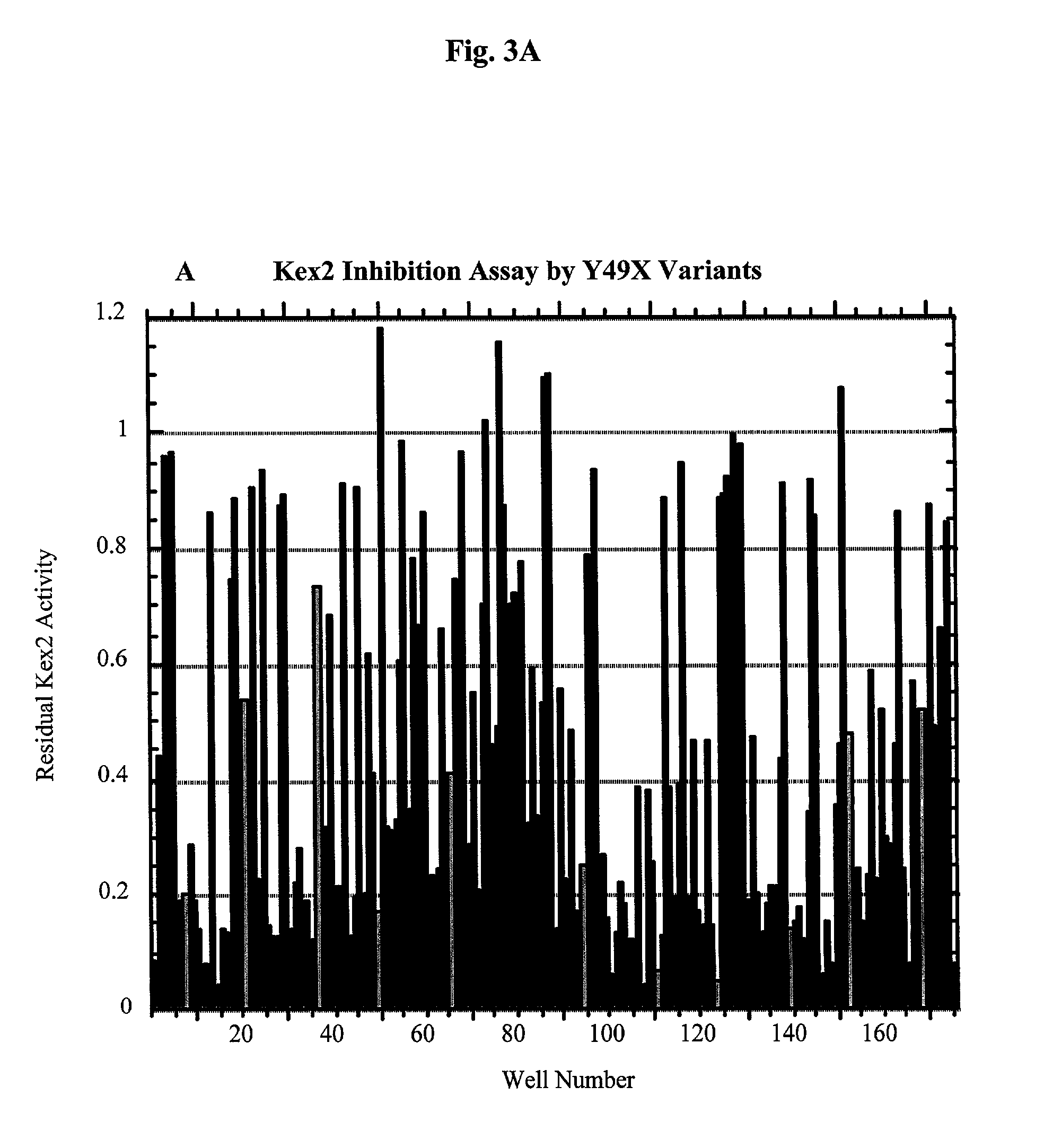Eglin c based drugs for treatment of disease
a technology of eglin and c variants, applied in the field of eglin c variants, can solve the problems of limited therapeutic application of these molecules, development of these molecules for therapeutic use, and development of these molecules, and achieve the effects of small size, stable and reversibl
- Summary
- Abstract
- Description
- Claims
- Application Information
AI Technical Summary
Benefits of technology
Problems solved by technology
Method used
Image
Examples
example 2
Creation of Second Generation Eglin c Variants: Adventitious Contact Site Variants
[0296] 1. Identification of sites of potential adventitious contacts. Ten residues were selected from close examination of the crystal structure of the eglin c-subtilisin Carlsberg complex (Bode, W. et al. (1986) EMBO J. 5: 813-818.). Eglin c residues within 5 Å of the subtilisin Carlsberg surface were chosen. The ten selected residues are shown in Table 4.
TABLE 4Ten selected residues as “Adventitious contact sites”, forrandomization, and defined substitutions for equal or enhancedinhibition of furin relative to inhibition by the template.Asp33Gly40His65Tyr35Leu47His68Leu37Tyr49Glu39Asn50
[0297] 2. Limited randomization of potential sites of adventitious contacts and creation of libraries. Limited randomization of eight sites was performed as an initial survey of potential adventitious contact residues (Table 5).
[0298] In this Example, R4R1-eglin and R4K1-eglin template genes were used. Limited rand...
example 3
Inhibition of Cellular Processing of Pro-Von Willebrand Factor by Asp49-R4R1 -eglin
[0318] The potency of Asp49-R4R1-eglin to inhibit intracellular furin activity when present in cell culture media was tested by examining furin dependent processing of von Willebrand factor (vWF) in COS-1 cells (Wise, R. J. et al. (1990) Proc. Natl. Acad. Sci. USA 87, 9378-9382). Pro-vWF is believed to be a physiological substrate of furin, where the site of cleavage is shown in FIG. 6, panel A.
Methods
[0319] SV40-driven vectors, pMT2-vWF (Wise, R. J. et al. (1990) Proc. Natl. Acad. Sci. USA 87, 9378-9382) and pSRfurin (Bravo, D. A., et al. (1994) J. Biol. Chem. 269, 25830-25837) were co-transfected into COS-1 cells following previously described methods (Dorner, A. J. & R. J. Kaufman (1990) in Methods in Enzymology 185 (Academic Press: San Diego) pp. 577-596). To monitor the effect of Asp49-R4R1-eglin on furin dependent pro-vWF processing, either Asp49-R4R1-eglin or wild type-eglin (Leu 45) (5 μM)...
example 4
Inhibition of Processing of Anthrax Protective Antigen by Purified Eglin-c Variants
[0322] This experiment describes the inhibition by purified eglin c variants of the processing of anthrax protective antigen in experimental toxicity assays.
[0323] Entry of anthrax lethal factor and edema factor into target cells requires the action of anthrax protective antigen for selective translocation (Young, J A, and Collier, R J (2002) Scientific American. 286(3):48-50, 54-9). Anthrax protective antigen binds to a receptor on the animal cell surface where it is cleaved by furin (Young, J A, and Collier, R J (2002) Scientific American 286(3):48-50, 54-9; Bradley, K A et al. (2001) Nature. 414:225-9). Cleavage by furin is required both for oligomerization of the protective antigen and its endocytosis (Beauregard, K E et al. (2000) Cellular Microbiology. 2:251-8; and Sellman, B R et al. (2001) Science. 292:695-7). Once internalized, oligomeric protective antigen can translocate lethal and edema ...
PUM
| Property | Measurement | Unit |
|---|---|---|
| molar ratios | aaaaa | aaaaa |
| length of time | aaaaa | aaaaa |
| pH | aaaaa | aaaaa |
Abstract
Description
Claims
Application Information
 Login to View More
Login to View More - R&D
- Intellectual Property
- Life Sciences
- Materials
- Tech Scout
- Unparalleled Data Quality
- Higher Quality Content
- 60% Fewer Hallucinations
Browse by: Latest US Patents, China's latest patents, Technical Efficacy Thesaurus, Application Domain, Technology Topic, Popular Technical Reports.
© 2025 PatSnap. All rights reserved.Legal|Privacy policy|Modern Slavery Act Transparency Statement|Sitemap|About US| Contact US: help@patsnap.com



